Video guides to veterinary CT scanning - the thorax
Computed Tomography (CT) is a useful diagnostic imaging modality that can provide you with more detailed information than conventional x-rays. Knowing when to do a CT scan (i.e. which types of cases and when in the case work-up) is crucial information. It helps vets get the most out of this modality for both the patient and the owner. However, there are also some considerations and limitations to think about.
Watch our short video guides which walk you through the key considerations for:
The videos cover:
- what to consider before you choose to do a CT scan
- CT vs x-ray for each body area
- the limitations of CT scans.
Veterinary CT scanning - questions to ask yourself
You can ask yourself these questions when deciding whether to choose to recommend a CT scan for your patient, or not:
- is CT appropriate for the anatomy that I want to image?
- will it answer the clinical question that I have in mind, considering the presentation of the patient?
- is it cost effective for the client, or would an alternative modality provide the answer at a lower cost?
- are there any contraindications that I need to consider before using it? This may be that the patient is not stable enough for chemical restraint (sedation or anaesthesia)
- am I happy with my decision on which body parts to scan?
- what type of acquisitions do I need to perform?
Advantages and disadvantages of CT scanning
Irrespective of the anatomical region imaged, it's important to consider the advantages and disadvantages of CT in general. There are a good number of advantages including:
- excellent spatial and contrast resolution
- the ability to generate a 3D representation of 3D anatomy
- ability to get a good overview of a large body area in detail
- ability to give contrast to get information about vasculature and perfusion.
But there are also some disadvantages, for example:
- it requires heavy sedation or general anaesthesia
- it can be expensive
- there are occupational safety considerations, such as ionising radiation
- it may necessitate travel to a different location with a CT machine.
- additional expertise in reporting the images is often required.
Watch our short video guides which walk you through the key considerations for:
Veterinary CT for the thorax
When could you choose CT for the thorax? CT is a fantastic imaging modality when you need detailed tomographic (cross-sectional) anatomical assessment of the thorax. Screening radiographs are indicated first line for most thoracic cases, and radiography should be used first line when gross structural disease in the thorax is suspected. CT can provide us with a wealth of useful information about the thorax, but it’s most often indicated once cardiac disease has been excluded.
Indications for thoracic CT may include:
- pathology that's not fully characterised on radiographs, or if findings on radiographs are equivocal or non-specific
- any dyspnea or tachypnoea (so long as the patient is stable)
- coughing, whether acute or chronic
- thoracic wall masses
- any trauma to the thorax
- staging of extra-thoracic neoplasia or checking for metastases
- investigating alongside other body regions for disseminated, multifocal, systemic disease
- surgical planning for any previously identified lesions in order to target them for surgery.
Watch our short video guides which walk you through the key considerations for:
Understanding the CT Imaging Process
Performing a CT scan involves three main steps: acquisition, processing, and viewing. Each of these stages is distinct and critical for producing accurate diagnostic results:
- Acquisition: This step occurs in the CT room and involves positioning the patient and setting parameters such as KV, mAs, and table speed. It is important to optimise these settings because errors at this stage cannot be corrected later. It is also important to ensure pre- and post-contrast series are obtained where needed. During acquisition, raw data is collected as a vast set of binary data that needs further processing to be translated into interpretable images.
- Processing: This step transforms the raw data into images using the CT scanner's built-in computer. This can be done after the patient has left, provided the raw data is available on the machine. Processing parameters include slice thickness, filters, and display field of view (DFOV). Common errors in processing can be corrected as long as the raw data is intact.
- Viewing: This involves manipulating the processed images on a workstation using various windowing techniques to highlight different anatomical features. Windowing adjusts the image contrast and brightness to make different tissues more visible.
Watch our short video guides which walk you through the key considerations for:
VET.CT Champions Radiation Safety through Global Campaign
VET.CT has launched a campaign to raise awareness about the importance of radiation safety in veterinary practice, providing a comprehensive suite of free resources and real-life case studies to support veterinary teams.
Read morePennard Vets Radiation Safety Case Study
How do real-life practices keep their teams and patients safe during diagnostic imaging? VET.CT sat down with leading clinics to uncover practical, everyday tips that make radiation safety simple and effective.
Read moreQueensland Veterinary Specialists Radiation Safety Case Study
How do real-life practices keep their teams and patients safe during diagnostic imaging? VET.CT sat down with leading clinics to uncover practical, everyday tips that make radiation safety simple and effective.
Read more